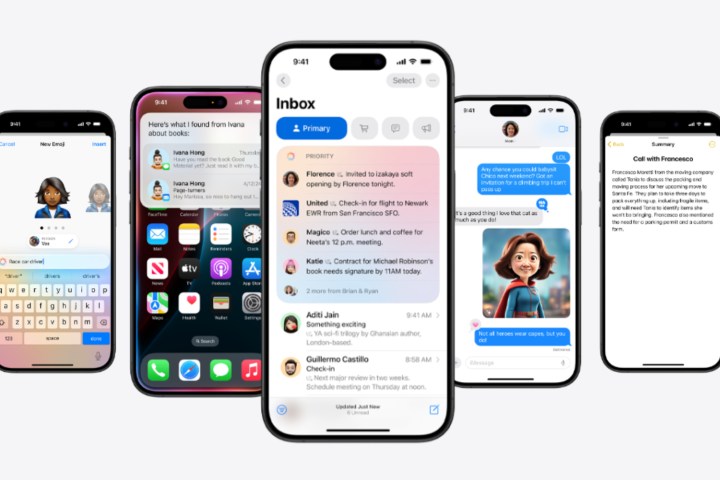

iOS 18 is a big and exciting iPhone update. From the home screen customization tools to the new Control Center and the various improvements to iMessage, there’s plenty to be excited about. I know I am!
However, there’s also an ugly side to iOS 18. A big part of this update includes Apple’s long-awaited AI features, which Apple refers to as Apple Intelligence. What we’ve seen so far of Apple Intelligence looks quite promising. Unfortunately, while these AI features are included in the iOS 18 update, they’ll only be available for a select group of people.
It creates a new precedent for iOS updates, and it may very well impact the iPhone forever.
iOS 18 is a two-tiered update

Whenever a new iOS update is announced, we expect it to be available for many years’ worth of iPhones. iOS 18 is no different. If you have an iPhone as old as the iPhone XS, iPhone XR, iPhone SE 2, or any newer models, you’ll get the iOS 18 update later this fall.
Although it’s no longer the leader when it comes to long-term software updates, Apple is still one of the best in the business. It’s long been standard that you can buy an iPhone and expect years and years of major software updates. It’s something that Android phones have just now caught up to in recent years, and it’s long been one of the biggest reasons to buy an iPhone over a competing smartphone.
Unfortunately, while iOS 18 is coming to 23 different iPhone models, only two of them are getting the full iOS 18 update. All of the Apple Intelligence features are only available for the iPhone 15 Pro and iPhone 15 Pro Max. Even if you have an iPhone 15, iPhone 15 Plus, iPhone 14 Pro, or any other iPhone model getting iOS 18, you won’t be treated to any AI goodies.
This isn’t the first time Apple has done this

Is this the very first time Apple has released an iOS update and not made every single feature available for every model receiving the new software? No. In fact, this has been an expected side effect of iOS updates for years. Some new features in iOS updates require processing power that older iPhones just aren’t capable of, which means some features are often on the chopping block with every major update.
For example, in the iOS 17 update last year, only iPhone 12 and newer models got the FaceTime gestures for triggering 3D effects in video calls. StandBy mode was also only available for iPhone 14 and iPhone 14 Pro models.
Older iOS updates apply, too. In iOS 16, the copy-and-paste tool for removing subjects from photos was only available for the iPhone XS and newer. In iOS 15, numerous FaceTime features — including Portrait mode and Spatial audio — also only worked if you had an iPhone XS or newer.
This feature discrepancy has never been ideal, but it’s also felt reasonable. We expect that some iOS features will only work on newer iPhones, but it’s typically only iPhones that are multiple years old that miss out on these features. Furthermore, these missing features are only ever a handful of smaller things — not huge pillars of the update.
Why iOS 18 is different

If Apple has done this before, why does it feel so new and different in iOS 18? This time around, many of the biggest and most exciting iOS 18 features are affected. And not only that but Apple is limiting Apple Intelligence to its two highest-end and most expensive iPhone models. That’s much different than anything it’s done in prior years, and it sets a worrying precedent for iOS updates going forward.
Presumably, all of this year’s iPhones — iPhone 16, iPhone 16 Plus, iPhone 16 Pro, and iPhone 16 Pro Max — will get the Apple Intelligence features coming to the iPhone 15 Pro and 15 Pro Max. Or will they? If Apple is being this restrictive with AI features right out of the gate, what’s to stop it from continuing to do so in the future? Could the iPhone 16 and iPhone 16 Plus miss out on Apple Intelligence, too? Could we see new Apple Intelligence Features announced this fall that are only available on the iPhone 16 Pro and iPhone 16 Pro Max?

These may be unnecessary concerns, but Apple has created a situation where I can’t help but wonder about them. Even if it’s impossible for Apple Intelligence to run on most existing iPhones because of hardware constraints, which very well may be the case, it doesn’t stop the whole situation from feeling any less crummy.
Maybe this is just an awkward one-time transitional period as we enter the world of Apple Intelligence. Maybe we won’t ever need to deal with something like this again. Alternatively, maybe this is the start of a new era of iOS updates, where only the best of the best get the biggest news features. We’ve never been in a position like this before, and it makes me nervous about what iPhone updates look like going forward.



